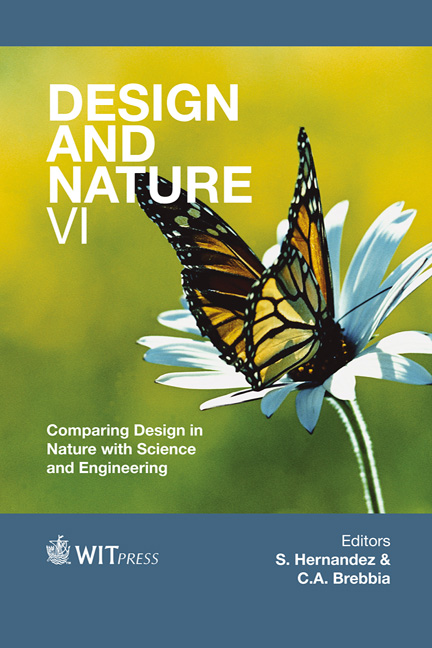Architectural Metabolic Forms
Price
Free (open access)
Transaction
Volume
160
Pages
11
Page Range
107 - 117
Published
2012
Size
3,776 kb
Paper DOI
10.2495/DN120101
Copyright
WIT Press
Author(s)
I. W. Foged
Abstract
Forms in nature are principally based on the ability to receive and distribute energy to maintain themselves. The purpose of the presented research is to take this basis as the fundamental constituents of creating forms and organisations in architecture, so to have metabolic capacities. Enabled by algorithmic digital models with integrated physical properties of the environment and the solid matter applied in the model, the work studies the formation processes and final forms of an architecture derived by energy transfer. Rather than thinking in terms of a priori defined geometries and typologies, formations and forms are the resultant of points distributed in space from ground upward with various densities effecting connections, enclosures and volumes. Performance evaluation and communication to the designer is provided directly in the model during formations and allow there through a more precise understanding of why a form is developing how it is. Concretely, the derived forms are evolved on the basis of a continuous feedback between solar energy, which spreads downward, the distributed mass that holds and spreads energy through air and the energy from the earth such as water and ‘nutrients’ travelling upward. The results illustrate the ability to organise forms that exhibit high performance in holding and allocating energy, such as thermal storage and spreading of heat. Furthermore, the communicative formations allow the designer to apply design parameters to parallel numerical optimisation with proportional aspect so fundamental to architectural expression. At its best, contemporary architecture simulate on forms to ‘check’ there performance. This work sets the conditions of context as the basis for development, so that forms only evolve if they have the energy to support it. Keywords: metabolism, generative algorithms, architectural systems.
Keywords
metabolism, generative algorithms, architectural systems.





